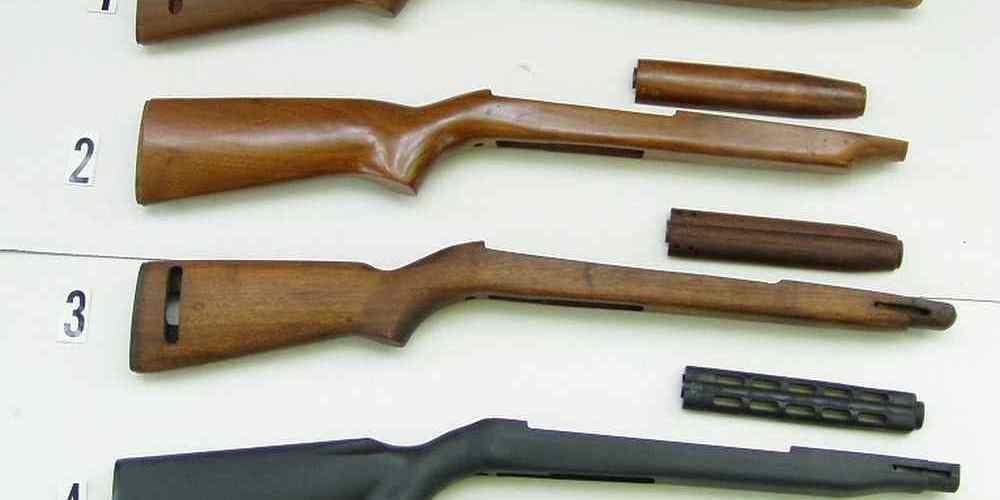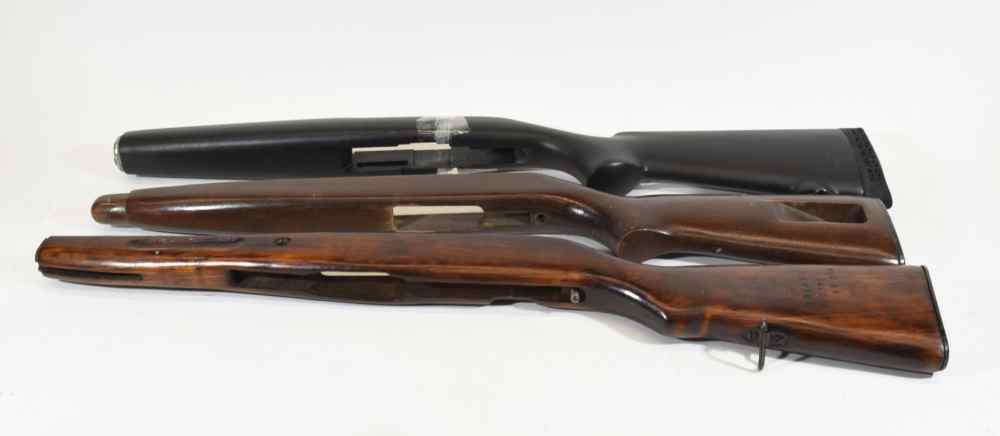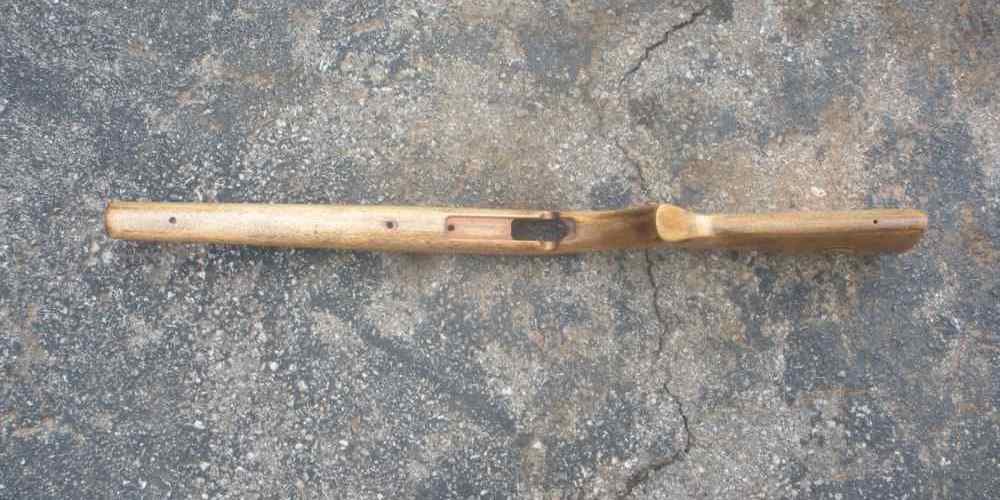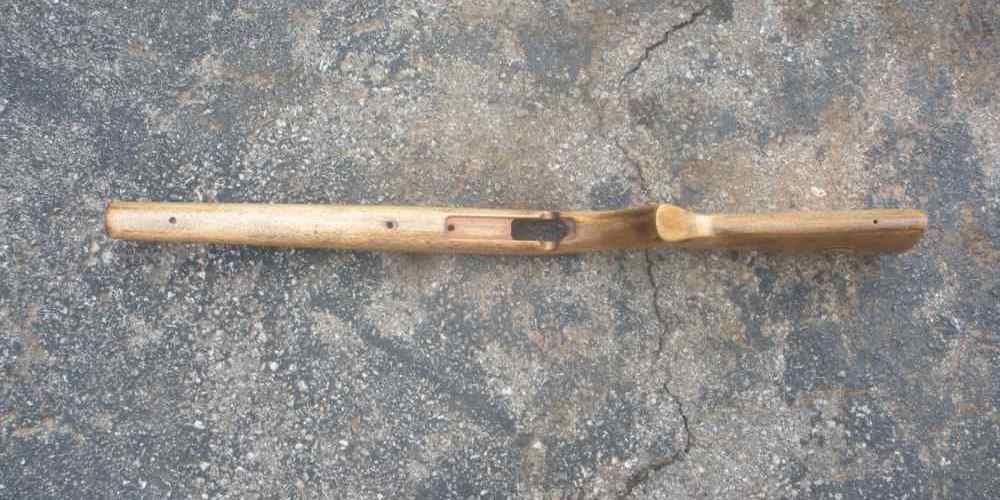Enhancing precision and comfort for every shot.
Benefits of Upgrading to a Custom Rifle Stock
When it comes to shooting accuracy and comfort, the rifle stock plays a crucial role in connecting the shooter to the firearm. A custom rifle stock can greatly enhance the shooting experience by providing a better fit, improved ergonomics, and increased stability. In this article, we will explore the benefits of upgrading to a custom rifle stock and how it can improve your shooting performance.
One of the main advantages of a custom rifle stock is the ability to tailor it to your specific body dimensions and shooting style. A stock that fits you properly will help you maintain a consistent shooting position, resulting in more accurate shots. Custom stocks can be adjusted for length of pull, comb height, and grip angle, ensuring that the rifle feels comfortable and natural in your hands.
In addition to improved fit, custom rifle stocks often feature ergonomic designs that enhance shooting comfort. A well-designed stock will distribute recoil forces more evenly, reducing felt recoil and minimizing shooter fatigue. This can be especially beneficial during long shooting sessions or when shooting high-powered cartridges.
Another benefit of upgrading to a custom rifle stock is increased stability and accuracy. A stock that fits securely against the shooter’s shoulder and cheek will help maintain proper alignment with the sights or scope, resulting in more consistent shot placement. Custom stocks can also be bedded to the action of the rifle, ensuring a solid and consistent platform for the barrel to rest on.
Furthermore, custom rifle stocks are often made from high-quality materials that are more durable and weather-resistant than factory stocks. This can be particularly important for shooters who spend a lot of time in the field or in adverse weather conditions. A well-made stock will withstand the rigors of hunting or competition shooting and provide years of reliable service.
In addition to the practical benefits of upgrading to a custom rifle stock, there is also the aesthetic appeal to consider. Custom stocks can be crafted from a variety of materials, including wood, laminate, fiberglass, and carbon fiber, allowing shooters to personalize their firearms to their own tastes. Whether you prefer a classic wood stock or a modern synthetic design, there are options available to suit every preference.
Overall, upgrading to a custom rifle stock can greatly enhance the shooting experience by improving fit, comfort, stability, and accuracy. Whether you are a competitive shooter looking to gain an edge on the competition or a hunter seeking a more comfortable and reliable firearm, a custom stock can make a significant difference in your shooting performance. With the wide range of options available, there is sure to be a custom rifle stock that meets your needs and preferences. So why settle for a stock that doesn’t quite fit or perform as well as you would like? Upgrade to a custom rifle stock and experience the difference for yourself.
How Rifle Stock Material Affects Accuracy
When it comes to shooting accuracy, the rifle stock plays a crucial role in connecting the shooter to the firearm. The material of the rifle stock can greatly impact the overall performance and accuracy of the rifle. In this article, we will explore how different rifle stock materials can affect accuracy and provide some tips on choosing the right material for your needs.

One of the most common materials used for rifle stocks is wood. Wood has been a popular choice for rifle stocks for centuries due to its natural beauty and durability. However, wood can be prone to warping and swelling, which can affect the accuracy of the rifle. Additionally, wood stocks can be heavier than other materials, which can impact the balance of the rifle and make it more difficult to hold steady while shooting.
Another popular material for rifle stocks is synthetic materials such as fiberglass or carbon fiber. These materials are lightweight and durable, making them a popular choice for shooters who are looking for a more modern and high-performance option. Synthetic stocks are also resistant to warping and swelling, making them a more stable option for shooting accuracy.
One of the key factors to consider when choosing a rifle stock material is the level of recoil absorption. Recoil is the backward movement of the rifle when it is fired, and a stock that can absorb and dampen recoil can help improve accuracy by reducing the amount of movement the shooter experiences when firing the rifle. Synthetic materials such as fiberglass and carbon fiber are known for their ability to absorb recoil, making them a popular choice for shooters who are looking to improve their accuracy.
In addition to recoil absorption, the weight of the rifle stock can also impact accuracy. A heavier stock can help stabilize the rifle and reduce the amount of movement the shooter experiences when firing. However, a stock that is too heavy can make the rifle difficult to hold steady and can cause fatigue during extended shooting sessions. Synthetic materials are often lighter than wood, making them a good choice for shooters who are looking for a balance between stability and comfort.
When choosing a rifle stock material, it is important to consider your shooting style and preferences. If you are a competitive shooter who values accuracy above all else, a synthetic stock may be the best option for you. However, if you are a traditionalist who values the natural beauty of wood, a wood stock may be the right choice for you.
In conclusion, the material of the rifle stock can have a significant impact on accuracy and performance. Synthetic materials such as fiberglass and carbon fiber are lightweight, durable, and offer excellent recoil absorption, making them a popular choice for shooters who are looking to improve their accuracy. Wood stocks are a more traditional option that can offer natural beauty and durability, but may be prone to warping and swelling. Ultimately, the best rifle stock material for you will depend on your shooting style and preferences.
Adjusting Rifle Stocks for Comfort and Precision
When it comes to shooting accuracy, the relationship between a shooter and their firearm is crucial. One key component that can greatly impact this relationship is the rifle stock. The rifle stock is the part of the firearm that the shooter holds against their shoulder while aiming and firing. It serves as a link between the shooter and the rifle, providing stability, comfort, and control.
Adjusting the rifle stock to fit the shooter’s body and shooting style is essential for achieving optimal comfort and precision. A properly fitted rifle stock can improve accuracy, reduce recoil, and enhance overall shooting performance. In this article, we will explore the importance of adjusting rifle stocks and provide some tips on how to do so effectively.
One of the most important aspects of adjusting a rifle stock is ensuring that it fits the shooter’s body properly. A stock that is too long or too short can cause discomfort and make it difficult to maintain a consistent shooting position. To determine the correct length of pull for a rifle stock, the shooter should stand in a natural shooting position with their arms relaxed at their sides. The distance from the inside of the elbow to the trigger finger should be measured, and this measurement can be used to adjust the length of pull on the rifle stock.
In addition to length of pull, the height of the comb on the rifle stock is also important for achieving a proper fit. The comb is the raised portion of the stock that supports the shooter’s cheek while aiming. If the comb is too low, the shooter may have difficulty aligning their eye with the scope or sights. Conversely, if the comb is too high, the shooter may experience discomfort or even bruising on their cheek. Adjusting the comb height to match the shooter’s cheek weld can greatly improve shooting comfort and accuracy.
Another important factor to consider when adjusting a rifle stock is the position of the butt plate. The butt plate is the part of the stock that rests against the shooter’s shoulder while firing. A properly positioned butt plate can help reduce felt recoil and improve shooting stability. The shooter should experiment with different butt plate positions to find the one that provides the best balance of comfort and control.
In addition to adjusting the physical dimensions of the rifle stock, shooters can also make changes to the stock’s material and design to improve comfort and performance. Some stocks are made of wood, while others are made of synthetic materials such as fiberglass or carbon fiber. Synthetic stocks are often lighter and more durable than wood stocks, making them a popular choice for many shooters. Additionally, some stocks feature adjustable components such as cheek risers and butt pads, allowing shooters to customize the stock to their individual preferences.
In conclusion, adjusting a rifle stock for comfort and precision is an important step in achieving optimal shooting performance. By ensuring that the stock fits the shooter’s body properly, adjusting the comb height and butt plate position, and experimenting with different materials and designs, shooters can improve their accuracy, reduce recoil, and enhance their overall shooting experience. Whether you are a seasoned marksman or a novice shooter, taking the time to properly adjust your rifle stock can make a significant difference in your shooting performance.
Enhancing Shooting Performance with Ergonomic Rifle Stocks
When it comes to shooting performance, many factors come into play. From the type of firearm to the ammunition used, every detail can make a difference in how accurate and comfortable a shooter is. One often overlooked component that can greatly impact shooting performance is the rifle stock. The rifle stock is the part of the firearm that connects the shooter to the gun, providing support and stability while aiming and firing. In this article, we will explore the importance of ergonomic rifle stocks in enhancing shooting performance.
Ergonomic rifle stocks are designed with the shooter’s comfort and control in mind. These stocks are shaped to fit the natural contours of the shooter’s body, providing a more comfortable and secure grip. This can help reduce fatigue and improve accuracy, especially during long shooting sessions. Additionally, ergonomic rifle stocks are often adjustable, allowing shooters to customize the fit to their individual preferences.
One of the key benefits of ergonomic rifle stocks is improved recoil management. Recoil, or the backward movement of the firearm when fired, can cause discomfort and affect shooting accuracy. A well-designed rifle stock can help absorb and distribute recoil energy, reducing the impact felt by the shooter. This can result in more consistent and controlled shots, especially when shooting high-powered rifles.
Another advantage of ergonomic rifle stocks is improved shooting stability. A stable shooting platform is essential for accuracy, especially when shooting at long distances. Ergonomic stocks are designed to provide a solid foundation for the shooter, helping to minimize movement and sway while aiming. This can result in tighter shot groups and improved overall shooting performance.
In addition to comfort and control, ergonomic rifle stocks can also enhance shooting speed. A well-designed stock can help shooters maintain a consistent shooting position, allowing for faster target acquisition and follow-up shots. This can be particularly beneficial in competitive shooting sports where speed and accuracy are crucial.
When choosing an ergonomic rifle stock, there are a few key factors to consider. The material of the stock can impact its durability and weight, with options ranging from traditional wood to lightweight synthetic materials. The shape and design of the stock should also be taken into account, as different styles may suit different shooting preferences.
Overall, ergonomic rifle stocks play a crucial role in enhancing shooting performance. By providing comfort, control, and stability, these stocks can help shooters achieve greater accuracy and consistency. Whether you are a recreational shooter or a competitive marksman, investing in a quality ergonomic rifle stock can make a significant difference in your shooting experience. So next time you hit the range, consider the impact that your rifle stock has on your performance, and make sure you are equipped with the best tool for the job.
Choosing the Right Rifle Stock for Your Shooting Style
When it comes to shooting accuracy and comfort, the rifle stock plays a crucial role in connecting the shooter to the firearm. The stock is the part of the rifle that the shooter holds against their shoulder, providing stability and support while aiming and firing. Choosing the right rifle stock for your shooting style is essential for achieving optimal performance and enjoyment on the range or in the field.
There are several factors to consider when selecting a rifle stock, including material, shape, length of pull, and ergonomics. The material of the stock can affect the weight, durability, and feel of the rifle. Common materials for rifle stocks include wood, synthetic materials like fiberglass or polymer, and metal. Wood stocks are traditional and offer a classic look and feel, while synthetic stocks are often lighter and more resistant to weather and wear. Metal stocks are less common but can provide added strength and stability.
The shape of the rifle stock can also impact comfort and accuracy. Some stocks have a straight comb, while others have a raised comb or a Monte Carlo design. The comb is the top part of the stock that rests against the shooter’s cheek, providing a consistent and comfortable cheek weld for proper sight alignment. A raised comb can help align the shooter’s eye with the scope or sights more easily, while a Monte Carlo design can provide additional support and stability for shooting from a bench or prone position.
The length of pull is another important consideration when choosing a rifle stock. The length of pull is the distance from the trigger to the butt of the stock, and it can affect the shooter’s comfort and ability to shoulder the rifle properly. A stock with a shorter length of pull may be more suitable for smaller shooters or those wearing bulky clothing, while a longer length of pull may be better for taller shooters or those with longer arms.
Ergonomics play a significant role in the overall comfort and usability of a rifle stock. A well-designed stock will fit the shooter’s hand comfortably and provide a natural point of aim. Some stocks feature adjustable components, such as cheek risers, butt pads, or length of pull adjustments, allowing the shooter to customize the fit to their preferences. Ergonomic stocks can help reduce fatigue and improve shooting accuracy over extended shooting sessions.
When choosing a rifle stock, it’s essential to consider your shooting style and preferences. Are you a precision shooter who values stability and consistency, or are you a hunter who needs a lightweight and durable stock for long days in the field? Do you prefer a traditional wood stock for its classic look and feel, or are you more interested in the practicality and performance of a synthetic stock?
Ultimately, the right rifle stock for you will depend on your individual needs and preferences. Take the time to research and try out different options to find the stock that best suits your shooting style. A well-chosen rifle stock can make a significant difference in your shooting experience, helping you achieve greater accuracy, comfort, and enjoyment with your firearm.







